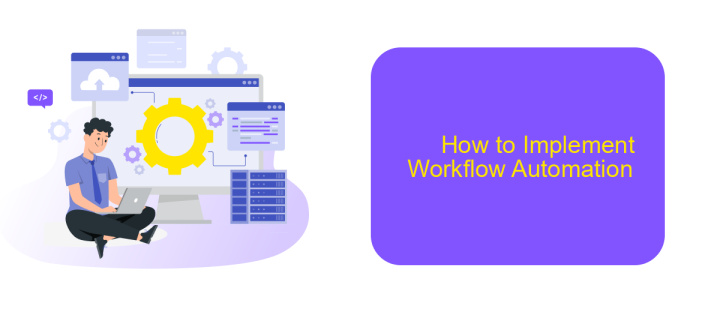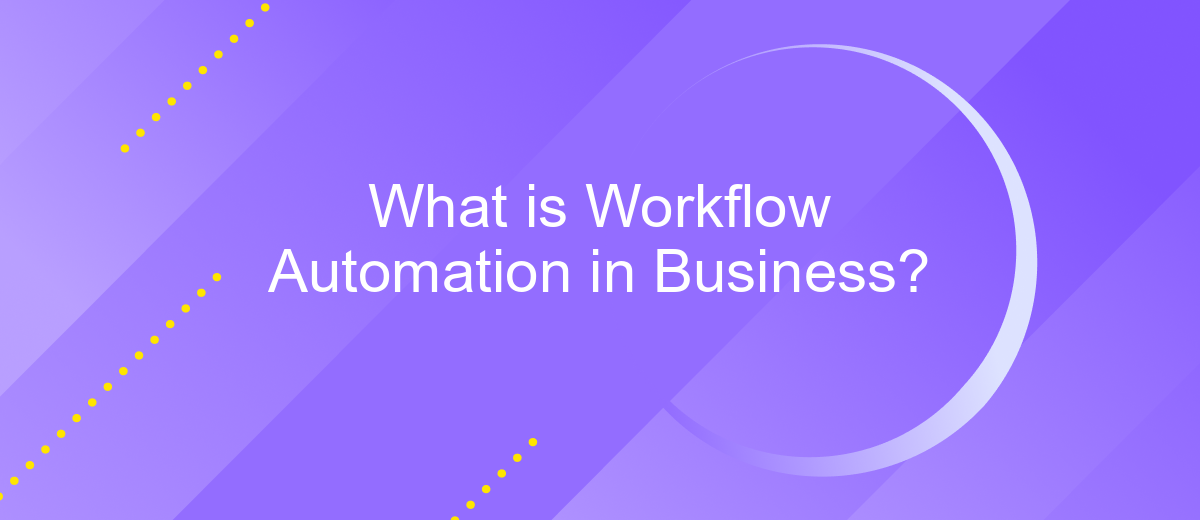What is Workflow Automation in Business?
Workflow automation in business refers to the use of technology to streamline and automate complex business processes. By replacing manual tasks with automated systems, companies can enhance efficiency, reduce errors, and save valuable time. This article explores the fundamental concepts of workflow automation, its benefits, and how businesses can implement these systems to achieve optimal performance and productivity.
Introduction
Workflow automation in business refers to the use of technology to streamline and automate complex business processes. This approach helps organizations save time, reduce human error, and enhance overall efficiency. By automating repetitive tasks, businesses can focus on more strategic activities and achieve better outcomes.
- Reduces manual labor and errors
- Increases operational efficiency
- Enhances data accuracy and consistency
- Facilitates better resource management
- Improves customer satisfaction
One of the key components of workflow automation is the integration of various software and systems. Tools like ApiX-Drive enable seamless connections between different platforms, ensuring smooth data flow and process continuity. By leveraging such services, businesses can easily automate workflows across multiple applications, leading to a more cohesive and efficient operational environment.
What is Workflow Automation?

Workflow automation refers to the use of technology to streamline and automate complex business processes, reducing the need for manual intervention. This involves creating a sequence of automated actions that are triggered by specific events or conditions, allowing tasks to be completed more efficiently and accurately. By automating repetitive tasks, businesses can save time, reduce errors, and improve overall productivity.
One of the key aspects of workflow automation is the integration of various tools and systems to ensure seamless data flow and communication. Services like ApiX-Drive facilitate this by providing easy-to-use platforms for setting up integrations without the need for extensive coding knowledge. This allows businesses to connect different applications and automate data transfers, ensuring that information is always up-to-date and readily available for decision-making.
Benefits of Workflow Automation

Workflow automation in business offers numerous advantages that can significantly enhance operational efficiency and productivity. By automating repetitive tasks, companies can free up valuable time for employees to focus on more strategic activities, ultimately driving growth and innovation.
- Increased Efficiency: Automation reduces the time required to complete tasks, leading to faster turnaround times and improved overall efficiency.
- Error Reduction: Automated processes minimize the risk of human error, ensuring higher accuracy and consistency in task execution.
- Cost Savings: By streamlining operations, businesses can reduce labor costs and allocate resources more effectively.
- Improved Compliance: Automation ensures that processes adhere to regulatory standards, reducing the risk of non-compliance.
- Enhanced Collaboration: Tools like ApiX-Drive facilitate seamless integration between various systems, promoting better collaboration and data sharing across departments.
Incorporating workflow automation into business operations not only boosts productivity but also fosters a more agile and responsive work environment. As a result, companies can better adapt to changing market demands and maintain a competitive edge.
How to Implement Workflow Automation

Implementing workflow automation in your business can significantly improve efficiency and reduce manual errors. The first step is to identify repetitive tasks that can be automated. Evaluate your current processes and pinpoint areas where automation can save time and resources.
Next, choose the right tools and software that align with your business needs. Platforms like ApiX-Drive can help you integrate various applications and automate workflows seamlessly. Ensure that the chosen tools are user-friendly and scalable to accommodate future growth.
- Identify repetitive tasks
- Choose the right automation tools
- Set up integrations using platforms like ApiX-Drive
- Test and refine the automated processes
Finally, train your team on how to use the new automated systems effectively. Regularly review and update your workflows to ensure they remain efficient and aligned with your business goals. By following these steps, you can successfully implement workflow automation and drive productivity.
Conclusion
In conclusion, workflow automation in business is a powerful tool that streamlines processes, reduces human error, and enhances productivity. By automating repetitive tasks, companies can focus on more strategic activities, thus driving growth and innovation. The implementation of workflow automation can lead to significant cost savings and improved operational efficiency, making it an essential component in modern business strategies.
Moreover, integrating various applications and systems through tools like ApiX-Drive can further optimize business workflows. ApiX-Drive offers seamless integration capabilities, allowing businesses to connect their software and automate data transfers effortlessly. This not only simplifies complex processes but also ensures that all systems are synchronized and up-to-date. As businesses continue to evolve, embracing workflow automation and reliable integration services will be crucial in maintaining a competitive edge in the market.
FAQ
What is workflow automation in business?
How can workflow automation benefit my business?
What types of tasks can be automated in a business workflow?
How do I get started with workflow automation?
What should I consider when choosing a workflow automation tool?
Apix-Drive will help optimize business processes, save you from a lot of routine tasks and unnecessary costs for automation, attracting additional specialists. Try setting up a free test connection with ApiX-Drive and see for yourself. Now you have to think about where to invest the freed time and money!

